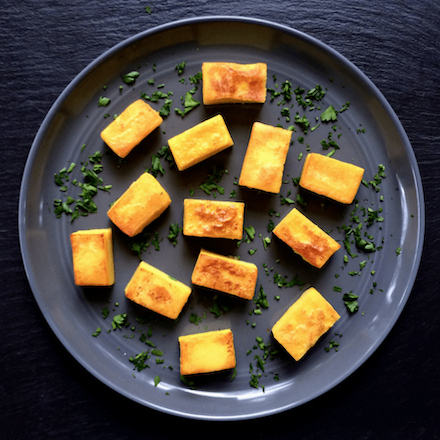
A Burmese Style Soy Free Tofu Recipe
Share
Eating a plant-based diet can help reduce inflammation and even may prevent or treat chronic diseases such as heart disease, diabetes and autoimmune conditions such as arthritis. Plant-based foods are rich in antioxidants, polyphenols and unsaturated fats, which can protect the cells from oxidative stress and inflammation caused by harmful substances in the body. Plant-based foods that fight inflammation are fruits, vegetables, nuts, seeds, beans, lentils, tofu, tempeh and whole grains, which also help by adding fiber to your diet. Studies have shown that increasing plant protein or replacing animal protein with plant protein can lower the risk of premature death and improve longevity by improving blood pressure, cholesterol levels, blood sugar levels and more.

But choosing to be mostly plant based can be challenging especially if you are sensitive to soy or are just removing it all together. So we’ve put together a recipe to show you how to make tofu at home using lentils or chickpeas instead of soybeans. This is a great way to add some diversity to your diet, especially if you are eating primarily plant based foods. It’s also a way to up your protein intake, and when you make it yourself you can ensure that you’re using local and/or organic ingredients to achieve the highest quality food sources while minimizing your environmental impact.
This recipe creates a chewy style tofu with a firm texture and it works well in any recipe that calls for traditional tofu. We adapted this recipe from bakinghermann.com, highly recommend checking out the tons of great plant-based recipe inspiration.
What you'll need:
- 100g dried chickpeas, or any type of dried lentil
- 10g ginger
- ¼ tsp dried turmeric

How to make it:
- Soak chickpeas overnight in water. Use at least 3 times the amount of water as chickpeas to ensure proper hydration of the chickpeas.
- The next day, drain the chickpeas and add them to the bowl of a blender or food processor with the ginger. Pulse until the chickpeas are broken down, then add 250mLs of water and blend until smooth.
- Add the mixture to a saucepan and add in the turmeric. Bring the mixture to a simmer, then cook for 2-5 minutes, stirring constantly with a spatula to make sure the mixture doesn’t stick to the bottom of the pan. The mixture will thicken as it cooks. Once it is thick enough that it holds on the spatula and doesn’t level out in the pan, it’s ready.
- Pour the mixture into a mold (you can use a glass baking dish, any shape is fine). Allow the mixture to set for at least an hour. Once set, it should be firm in texture and it’s then ready to cut into cubes or rectangles for serving. Fry it in a pan with some avocado oil for a crispy texture, or in an air fryer to use less oil.
Note: recipe can also be made using chickpea flour. In this case use 140 grams chickpea flour, whisked with 300mLs of water. Add in only half of the water at first and mix to remove all clumps, then add in the rest of the water and mix. At this point strain the mixture through a sieve into 300mLs boiling water in a saucepan. Add the ginger (grated or minced) and turmeric and turn down the heat, and follow the recipe from number 3 on.
Check out this recipe for a traditional Burmese dish using your chickpea tofu.

About Author: Stephanie is the current fulfillment director and kitchen supervisor for Organic Pharmer. She studied Neuroscience at University of California, Irvine
